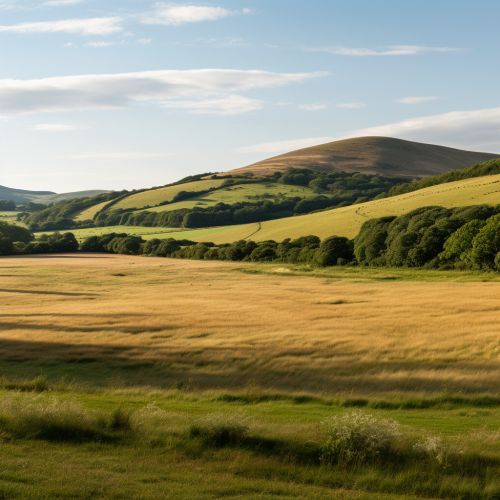Drumlin
Formation
Drumlins are formed by the action of glacial ice acting upon underlying unconsolidated till or ground moraine. The process of formation begins when a glacier moves over an area containing a mass of till or loosely consolidated sediment. The pressure exerted by the overlying ice causes the till to be molded into a streamlined shape, with the long axis of the drumlin parallel to the direction of ice movement. The formation of drumlins is complex and not fully understood, but they are thought to form in part due to the plastic deformation of the subglacial till layer, and in part due to the erosion and redeposition of till from upstream.


Characteristics
Drumlins are typically elongated, teardrop-shaped hills, with the tapered end pointing in the direction of glacial advance. They can vary in length from less than a hundred meters to several kilometers, and in height from tens of meters to over a hundred meters. The surface of a drumlin is usually composed of till, but can also be covered with gravel, sand, or loamy soil. The internal structure of a drumlin is often layered or stratified, reflecting the different materials that were deposited by the glacier as it advanced and retreated.
Distribution
Drumlins are found in many parts of the world that were covered by ice during the last glacial period, including North America, Europe, and parts of Asia and South America. They often occur in groups or fields, with many drumlins aligned in the same direction. These drumlin fields can cover areas of hundreds or even thousands of square kilometers. Some of the largest drumlin fields in the world are found in the Boston Basin in the United States, the Central Lowlands of Scotland, and the Keewatin area of Canada.
Significance
Drumlins are important indicators of past glacial activity. Their size, shape, and orientation can provide valuable information about the direction and velocity of ice movement, as well as the characteristics of the underlying till or sediment. Drumlins can also influence the local landscape and environment. For example, they can affect drainage patterns and create habitats for various plant and animal species. In some areas, drumlins have been used for agricultural purposes, as their slopes can provide good drainage for crops.
